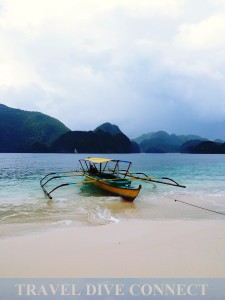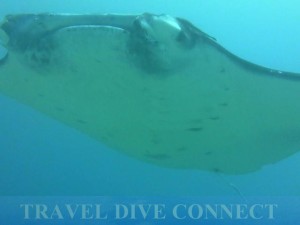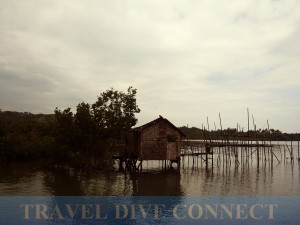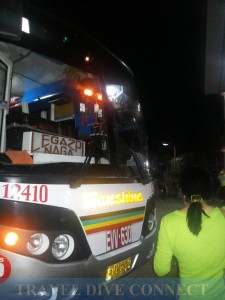

It is easy to fall in love with the region of Bicol. Blessed with picturesque islands, the bluest waters, and fiery volcanoes that attract more than repel, you get smitten. Its sordid past does not seep into the haze of perfect beaches, great food, warm and friendly people, and the juvenile mantas you just saw at Manta Bowl. Until it does.
Rapu Rapu Island
Rapu Rapu Island is on the eastern side of Bicol, where the Albay Gulf lies. It was a picture of perfection before 2005, when Australian firm Lafayette Philippines, Inc. was granted an Environmental Compliance Certificate by the Department of Environment and Natural Resources (DENR) to extract zinc, copper, silver and gold from the island.
Rapu Rapu was naturally wealthy. It counted lush sea grass beds and mangrove forests as some of its riches, nurturing both man and fish. Its fishermen harvested from the ocean, getting more than enough to feed their families and sell in the public markets. They shared the abundance with dolphins, whale sharks, sea turtles and other sea mammals that pass through the gulf during their migration.
But mining promised tangible richness. It carried the “progress” banner, with the DENR and the municipality’s officials cheering on the side. So despite protests, Lafayette through its Rapu-Rapu Polymetallic Project (RRPP) got the go-ahead to mine.
Within a year of mining in Rapu Rapu, two major fishkills had been documented, one in October 2005 and the other in July 2006. Residents claimed there were more. This led to the establishment of the Rapu Rapu Fact-finding Commission, which was tasked to investigate the October fish kill. Experts were brought in and majority of these scientists and doctors attested to the claims that Lafayette was negligent in monitoring its mining activities and in minimizing their environmental impact.
But then again, it’s money and “progress.” The DENR ignored the Commission’s findings, and the RRPP stayed. Negligence and the disregard for nature were norm. It got so bad that the government had to provide a Php 10 million emergency assistance for fisherfolks who now had zero catch. Their once abundant waters were now the subject of health and ecological studies to determine the levels of heavy metal contamination and long-term impact on its ecosystems.
By 2012, Rapu Rapu Island had turned from paradise into a wasteland. Creeks close to the mine site had red, yellow, brown and orange waters. Fish catch was now down to zero. Fish kills were regular occurrences, and became more pronounced when rare fish fell victim, such as the two sperm whales killed during the mining operation. As for “progress,” the island remained a third class municipality – the majority were still poor. The only infrastructure developments were a footbridge, a 1.8 km dirt road, and a street in the town center.
From the get-go, Rapu Rapu Island wasn’t an ideal mining site. It had an island topography. The site was too close to the sea. It was in the typhoon path, with no dry season and an intense wet season from November to January. Add to that, it had an abundance of iron sulfide rocks, which generated sulfuric acid.
What would make anyone allow mining in this area can only be assumed. What’s true is that it has gravely affected the natural habitats in and around Rapu Rapu Island.
RRPP is now under MSC of Malaysia, and LG and Kores of South Korea. While mining in Rapu Rapu should have stopped in 2013, the firm continues to explore for new mine sites.
What’s at stake goes beyond Albay Gulf. Water flows. Destructive mindsets seep into reality.
Treasures Underneath

Bicol waters are hectares of some of the richest parts of the ocean. Lamon Bay, Ragay Gulf, Ticao Pass, Burias Pass, Samar Sea, San Bernardino Straits, Lagonoy Gulf and the Maqueda Channel surround the region. Testament to the abundance is the presence of the very rare megamouth shark (Megachasma pelagios), which was found along Burias Pass.
Fishing is one of the top industries in the region, next to agriculture. It has also seen some developments in marine tourism. Notable here are the whale shark tourism in Donsol, Sorsogon, and the manta ray diving tourism in Ticao Island, Masbate.
Donsol’s case is impressive. Since the ecotour’s inception in 1999, it has become a key contributor to the municipality’s income. It made $700,000 in 2005. Monthly wages of families involved increased by $50, a considerable progress given the $5 a day minimum wage.
This only shows the possibilities that tourism presents. The condition is the sustainability of practices, both within and outside the industry.
Social and Economic
 This may be where problem lies. While the Rapu Rapu case was driven by big business, there are people within the region who permitted the environmental siege. And there are those who will continue to choose to place a price tag on the environment for its perceived current value – certainly not its value to future generations..
This may be where problem lies. While the Rapu Rapu case was driven by big business, there are people within the region who permitted the environmental siege. And there are those who will continue to choose to place a price tag on the environment for its perceived current value – certainly not its value to future generations..
Such mindset has led to some of Bicol’s marine ills, such as overfishing, unsustainable fishing practices and poaching.
To this day, even with its municipal economy buoyed by ecotourism, Bulusan in Sorsogon reports at least 40 kilos of sea turtle (pawikan) meat in its public market weekly. The manta rays of Ticao Pass are still hunted for its meat and by-products. And the laws that should protect these creatures lack teeth.
According to Greenpeace Southeast Asia, while Ticao Pass and Burias Pass are some of the richest fishing grounds in the country, they are also some of the most problematic when it comes to unsustainable fishing practices and poaching.
This fact is not lost on DENR Regional Director for Bicol Gilbert Gonzales: “We appeal for help from the public in our campaign in the preservation not only of pawikan but also all of the endangered species whose presence in the seawaters around Bicol is considered a gift of nature that others in the world do not have.”
And these are great words – a leveling up compared to past support of destructive mining in Rapu Rapu. A call for preservation will be more rewarding to future generations, certainly much more than mining.
But words are just words. There are still the social and the economic of it all. Without ample education on sustainable practices and alternative livelihoods, people cannot see beyond the now – when they have to eat and provide for their families. Without protecting local fisheries from the encroachment of commercial outfits, fisherfolks will seek out the surest way to harvest from the ocean, regardless of sustainability. Without the trickling down of tourism profits, people will opt to just see a pawikan on their dinner tables than in the sea.
References:
According to Green Peace: Overfishing is killing Bicol’s marine wealth
http://balita.ph/2015/03/17/denr-rouses-bicolanos-to-marine-life-conservation/
Mining in Rapu Rapu: A Countdown to Disaster
http://www.greenpeace.org/international/Global/international/planet-2/report/2007/8/mining-in-rapu-rapu-a-countdo.pdf
Save Rapu Rapu
http://saverapurapu.blogspot.com/
From paradise to wasteland: Environmental destruction, rights violations abound in Bicol’s mining industry
http://www.piplinks.org/paradise-wasteland%3A-environmental-destruction,-rights-violations-abound-bicol%E2%80%99s-mining-industry
Donsol Whale Shark Research and Ecotourism Sustainability Program
http://wwf.panda.org/who_we_are/wwf_offices/philippines/index.cfm?uProjectID=PH0965


